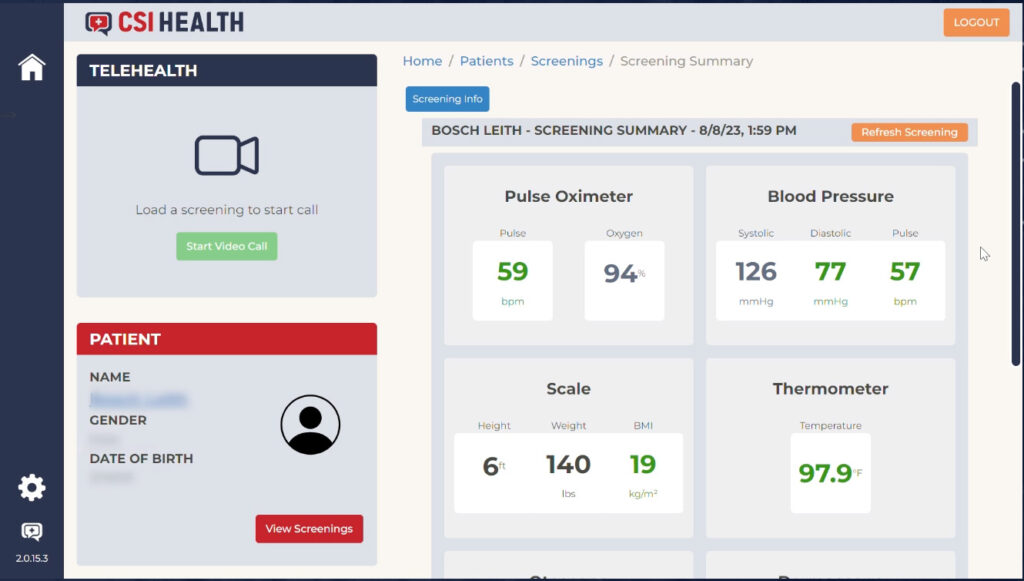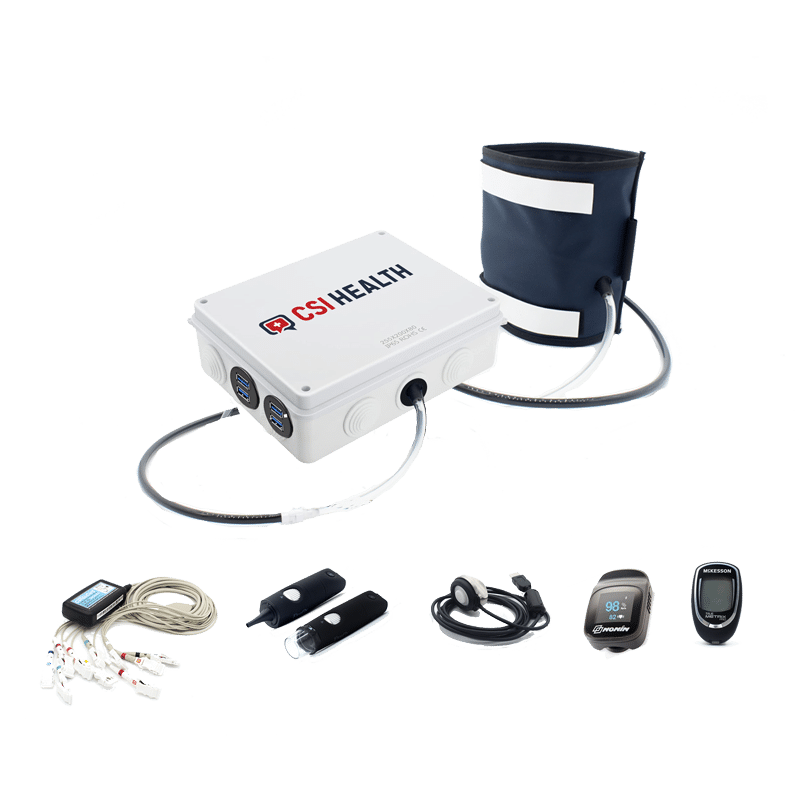

Corporate Wellness and Occupational Health
CSI Health partners with employers to support corporate wellness and occupational health programs. Our portfolio of fixed-location and mobile telemedicine solutions enables and enhances employer initiatives designed to improve the overall health and well-being of employees and to focus on the prevention, management, and treatment of work-related injuries and illnesses, creating a healthy, safe, and productive work environment.



Convenient Health Monitoring
Enable employees to monitor health parameters conveniently through remote diagnostic devices, tracking vital metrics like blood pressure and heart rate from work. This encourages regular health check-ins and a proactive approach to well-being, eliminating the need for frequent healthcare facility visits.

Early Detection and Prevention
Diagnostic telehealth enables real-time monitoring, aiding in the early detection of health issues. Conducting remote screenings identifies risk factors early, allowing for timely intervention, personalized health strategies, and preventive measures, promoting overall employee well-being and reducing the risk of severe health issues.

Improving Employee Health, Well-being, and Safety
Corporate Wellness programs and initiatives are designed to improve employees’ overall health and well-being. These programs promote healthy lifestyles, prevent illness, and manage existing health conditions. One of the key components of Corporate Wellness programs is health screenings and assessments, which consist of regular health check-ups, biometric screenings, and risk assessments. CSI Health can help automate and integrate biometric screenings and risk assessments while providing virtual access to clinical staff for regular health check-ups.
Occupational Health primarily focuses on preventing, managing, and treating work-related injuries and illnesses. CSI Health enables the triaging of injuries, treating employee illness on the job site, and treating conditions specifically related to job tasks and work environments by facilitating local access to FDA-approved diagnostic peripherals and virtual access to clinical resources at primary or remote work locations.
Diagnostic Telemedicine In the Field
Solutions

MedHub
Learn more about our unique telemedicine solutions
- (800) 533-9230
- sales@csihealth.net
-
901 NE Loop 410, #807
San Antonio, TX 78209

Better Healthcare Everywhere


